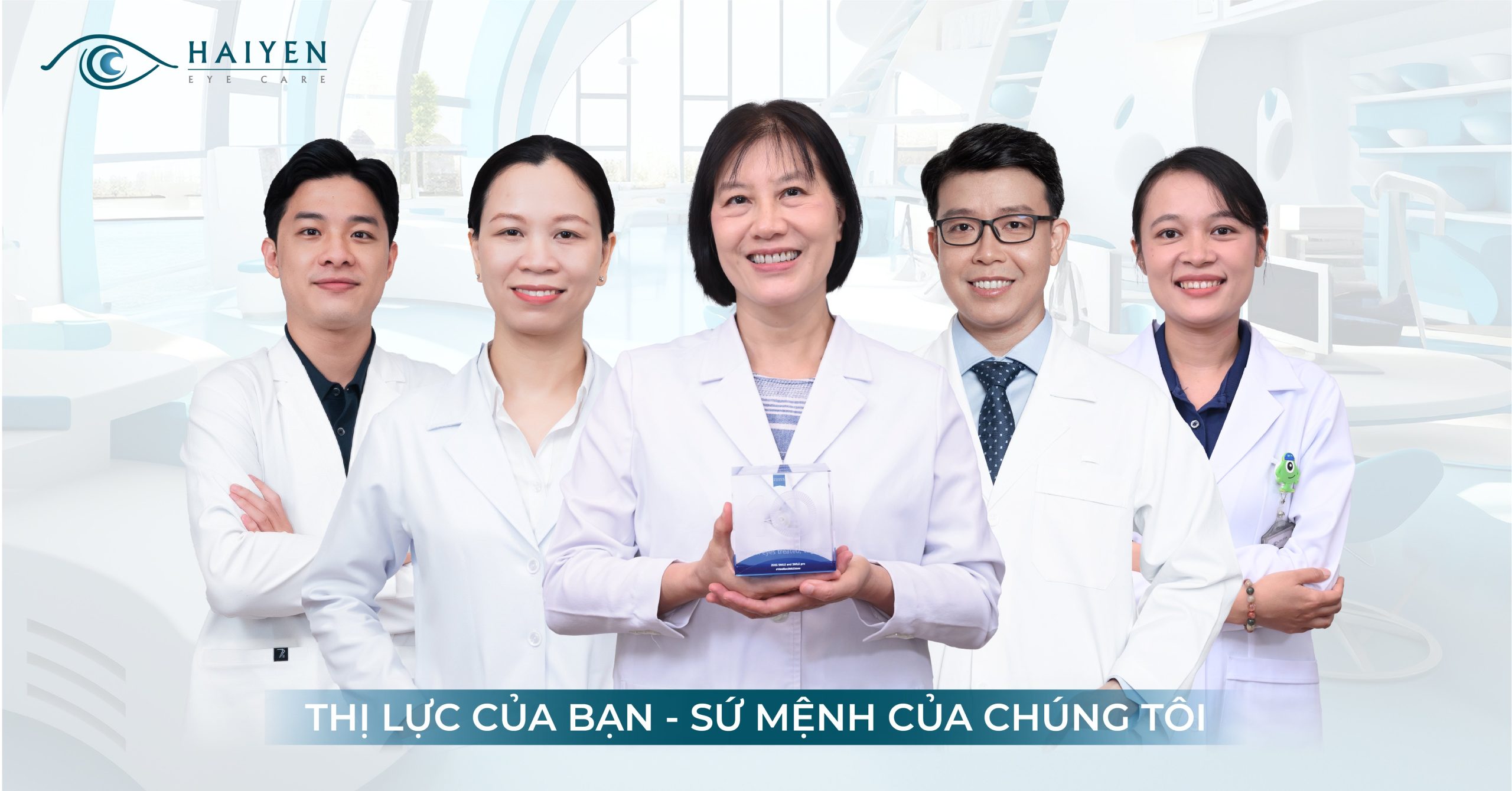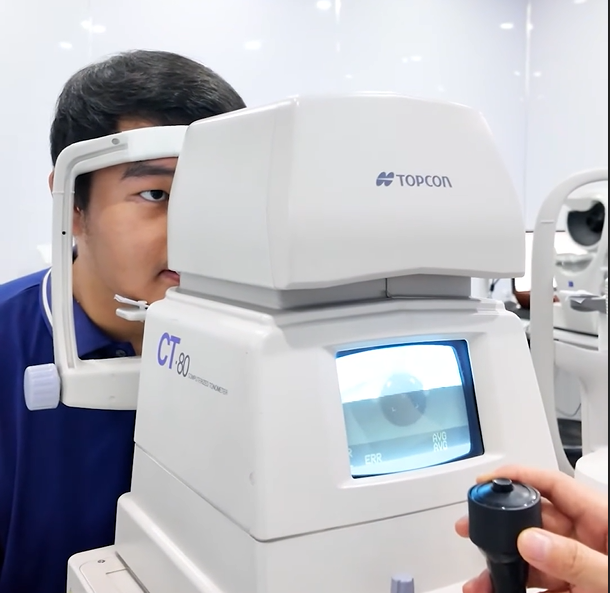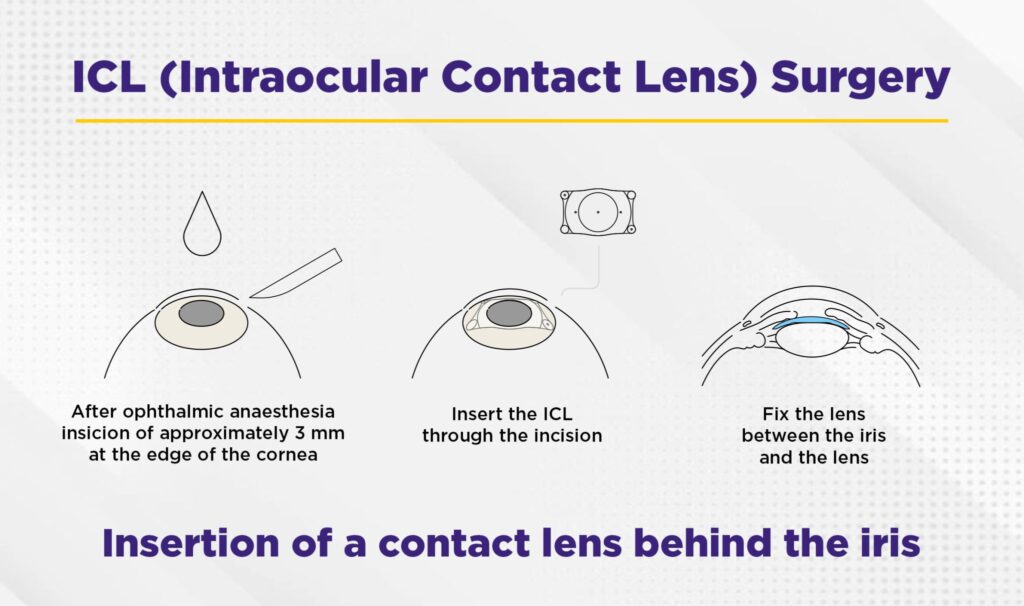3 Popular Myopia Surgery Methods: Phakic ICL, ReLEx SMILE & Femto LASIK

Treatment methods must be chosen based on each individual case
Every eye is a unique world. From corneal thickness, the degree of myopia or astigmatism, to dry eye conditions, all factors affect the choice of treatment method.
The article below outlines three of the most common options today, with a concise comparison table, to help you make a safe, long-term decision. Consulted by Hai Yen Eye Care Center.
How Each Method Works
Phakic ICL
A thin biocompatible Collamer lens is placed behind the iris and in front of the crystalline lens. No flap is created, no corneal tissue is removed; in other words, it does not damage the cornea structurally. The lens can be removed if necessary, preserving future treatment options.
Myopia Surgery with ReLEx SMILE
A Femtosecond laser creates a thin lenticule within the corneal stroma, which is then extracted through a micro-incision (~2 mm). No corneal flap is created, less impact on corneal nerves, thus reducing the risk of dry eyes.
Myopia Surgery with Femto LASIK
A laser creates a thin corneal flap, which is lifted; then an Excimer laser reshapes the cornea so light focuses correctly on the retina. Recovery is fast, widely applied, and cost-effective.
Treatment Range (Quick Reference)
| Criteria | Phakic ICL | ReLEx SMILE | Femto LASIK |
|---|---|---|---|
| Myopia | ~ -3.00D to -20.00D | Up to -10.00D | Up to -10.00D |
| Astigmatism | ~ 1.00D to 4.00D (Toric) | Up to 5.00D | Up to 5.00D |
| Hyperopia | Selected cases | Not typically indicated | Up to +6.00D |
Exact numbers depend on clinical assessment & diagnostic tools, corneal mapping, anterior chamber depth, endothelial cell count… The doctor will explain the suitable range for each eye.
Key Advantages

Clear vision – a fresh start for your eyes
- Phakic ICL: Preserves corneal tissue, suitable for thin or dry corneas; excellent vision quality (especially in high myopia); UV protection thanks to Collamer material; can be removed if indicated.
- ReLEx SMILE: No flap, very small incision (~2 mm), comfortable, fast recovery; ideal for young active individuals and athletes.
- Femto LASIK: High precision, vision improves quickly after surgery, cost-effective, widely available.
All surgeries carry risks (temporary dry eye, night glare, possible retreatment). Proper eye drops use, follow-up visits & eye protection significantly affect outcomes.
Brief Comparison of Methods
| Aspect | Phakic ICL | ReLEx SMILE | Femto LASIK |
|---|---|---|---|
| Corneal impact | No tissue removal | 2 mm incision | Flap creation |
| Dry eye | Very low | Low | Possible in early stage |
| Very high myopia | Suitable | Limited | Limited |
| Future adjustment | Can be removed if necessary | No | No |
| Recovery time | Fast (1–2 days) | Fast | Fast |
| Cost | High | Medium – high | Affordable |
Which Method Fits You?
Golden rule: Choosing a myopia surgery method must be based on the actual condition of your eyes, not on “word of mouth.” Some quick guidelines often advised by doctors:
- Thin cornea, dry eyes, or very high myopia: Phakic ICL should be prioritized. This Collamer lens, placed behind the iris and in front of the natural lens, does not damage the cornea, avoids dry eye, and has been proven safe in over 3 million cases worldwide.
- Preference for minimally invasive & active lifestyle: ReLEx SMILE is better suited with its ~2 mm incision, lower risk of dry eye, and fast recovery.
- Moderate myopia, seeking quick recovery & cost-effectiveness: Femto LASIK remains a popular, safe, and effective choice.
To better understand optical mechanisms, post-surgery care, and long-term vision protection strategies, you can explore the Ophthalmology Knowledge Library of TD Eye. This is a valuable source that gives patients a comprehensive view before making a decision.
However, it’s important to note that every method carries potential risks such as elevated intraocular pressure, endothelial cell loss, or cataract. Therefore, comprehensive screening at a specialized facility like Hai Yen Eye Care Center is the most crucial step to determine the safest and most suitable solution for each eye.
Personalized Consultation at Hai Yen Eye Care Center

Experienced doctors at Hai Yen Eye Care Center – your trusted partner in regaining vision
There is no single method that is “the best for everyone.” At Hai Yen Eye Care Center, doctors measure corneal topography, anterior chamber depth, refractive cycle, tear film and pupil under real-life conditions to propose a personalized treatment plan for each patient.
Quick FAQs
How soon can I see clearly after surgery?
Most patients regain functional vision fairly quickly (typically within 24–72 hours). However, fine visual quality (contrast, night vision) may continue to improve over several weeks.
I’m worried about prolonged dry eyes?
The risk of dry eye varies between techniques. SMILE and Phakic ICL generally have lower rates due to greater preservation of corneal nerves; modern LASIK has also significantly improved with tailored drop regimens and hydration care.
Is Phakic ICL “permanent”?
Phakic ICL is designed for long-term effectiveness but can still be removed if medically indicated (for example, if vision correction strategies change in the future). The decision is always based on the doctor’s overall evaluation.
Do I need long time off work?
Most people can return to office work within 1–3 days, provided they avoid rubbing the eyes, wear protection outdoors, use prescribed drops, and attend follow-up appointments.

 vi
vi 01-Sep-2025
01-Sep-2025
.svg) Hotline
Hotline Appointment
Appointment https://haiyeneyecare.com/
https://haiyeneyecare.com/ 31A Nguyễn Đình Chiểu, Đa Kao Ward, District 1, Ho Chi Minh City
31A Nguyễn Đình Chiểu, Đa Kao Ward, District 1, Ho Chi Minh City Opening Hours
Opening Hours







 0916.741.763
0916.741.763